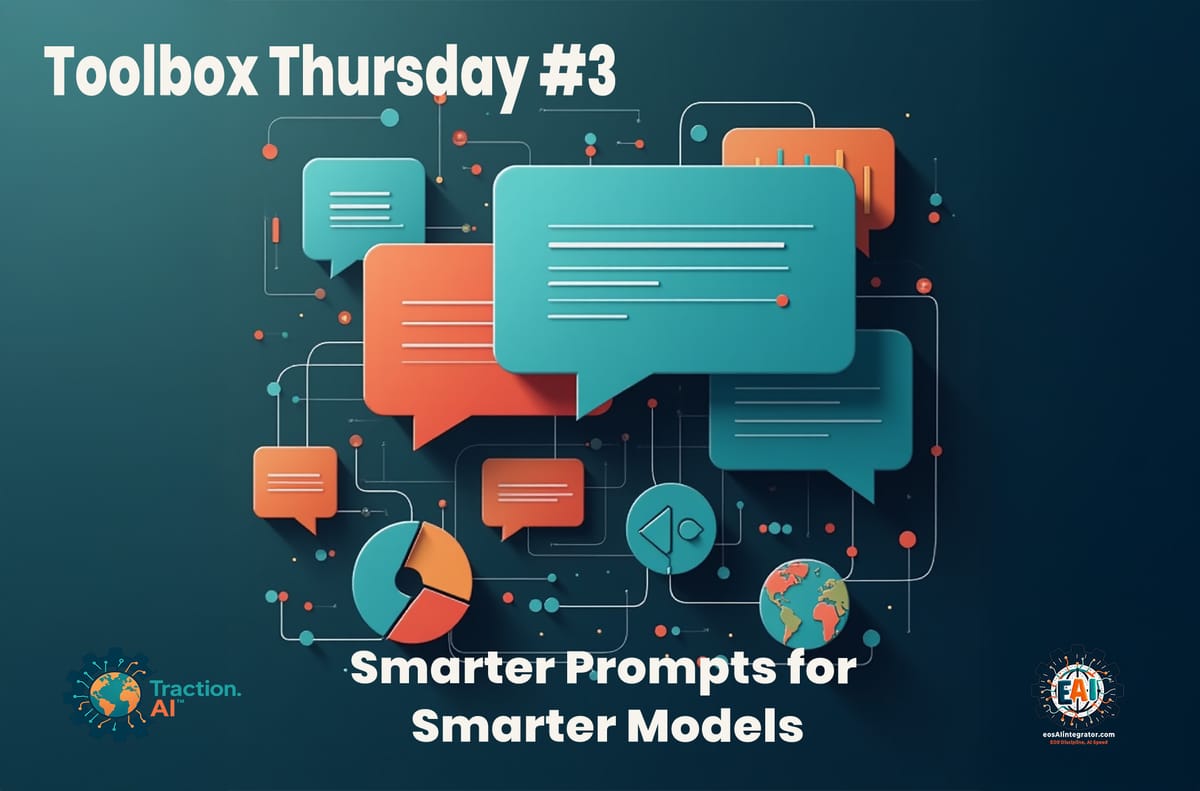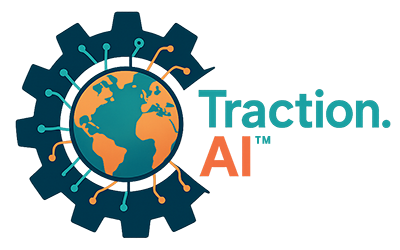Toolbox Thursday #3: Prompt Engineering 2.0: Smarter Prompts for Smarter Models
Smarter prompts for smarter models. Discover five new EOS-aligned prompt patterns and drift-proofing tips built for the 2025 class of LLMs—so busy Integrators get clarity, not clutter.

AI models don’t stand still—and neither can your prompts. The large language models (LLMs) of 2025 are sharper, faster, and more context-aware than their predecessors. That’s good news for Integrators who want clarity and execution, not AI science experiments. But it also means prompt patterns that worked last year may now feel clunky, outdated, or drift off target.
This Toolbox Thursday update shares five new prompt patterns plus drift-proofing techniques—all designed for busy Integrators who need results, not rabbit holes.
1. The “Outcome + Constraint” Pattern
Instead of asking for information, ask for a deliverable with boundaries.
- Example: “Draft a 3-point executive summary for my Level 10 Meeting™, no more than 150 words, bullet-friendly.”
This sharpens both focus and format—reducing cleanup later.
2. The “Persona Lens” Pattern
LLMs now handle role-based reasoning far better. Tell it who it is before you ask what you need.
- Example: “Act as an EOS Integrator responsible for cross-department alignment. Re-frame this Rock so it connects Finance and Ops.”
When you set the lens, the model speaks your language.
3. The “If-Then Options” Pattern
Give AI branches to explore before you decide.
- Example: “If the marketing team resists this change, suggest 3 IDS™ discussion starters. If they embrace it, suggest 3 accountability checkpoints.”
This produces flexible playbooks instead of single answers.
4. The “Data-Anchor” Pattern
Integrators thrive on data, not drift. Anchor your prompt with a reference point.
- Example: “Based on this scorecard metric—sales calls down 15%—suggest 2 Rocks that reinforce lead flow.”
Anchors keep the AI grounded in facts, not speculation.
5. The “Time-Boxed Scenario” Pattern
EOS is built on 90-day worlds. Tell the AI to think in time-bound containers.
- Example: “Frame this initiative as a 90-day Rock with clear milestones for weeks 2, 6, and 10.”
Time-boxing forces precision and keeps the output execution-ready.
Drift-Proofing in 2025
Even the smartest models wander. Here are three safeguards:
- Re-state context every few turns—don’t assume the AI remembers your EOS framework.
- Lock tone + format in your prompt (“executive-level,” “bullet-style,” etc.) to avoid style drift.
- Template your winners—save the 3–5 patterns that consistently deliver and re-use them like SOPs.
Think of prompts not as one-off requests, but as repeatable operating tools.
Why This Matters for Integrators
The Integrator seat is already juggling priorities, data, and execution tracking. Prompt Engineering 2.0 doesn’t add to the noise—it strips it away. With these patterns, you turn LLMs into assistants that:
- Surface Rocks aligned with your Visionary’s goals
- Reinforce accountability across the leadership team
- Translate data into actions without over-explaining
That’s how you stay focused on execution while the AI sweats the details.
🔗 Next Step: Download the Integrator Starter Pack
Grab pre-built prompt templates, drift-proofing checklists, and a sample “About Me for AI” sheet you can drop straight into your workflows.
Get the Starter Pack → Part of the AI Implementation Toolkit trusted by 2,400+ EOS® leaders.Look next week for The AI Shadow Integrator, Friday September 5th!
AI Speed | EOS® Discipline
See you on the track. 🏁




Comments ()